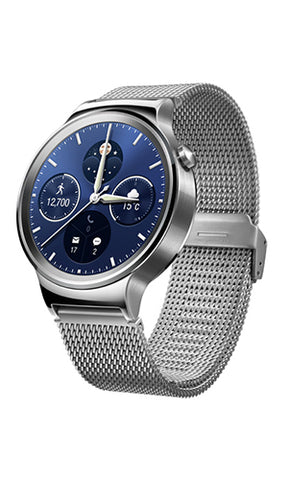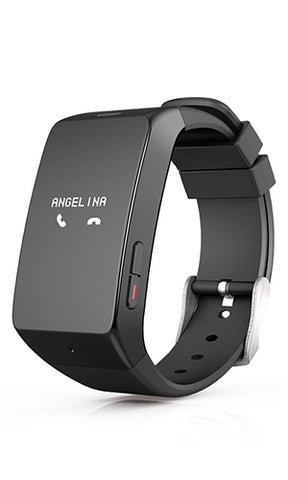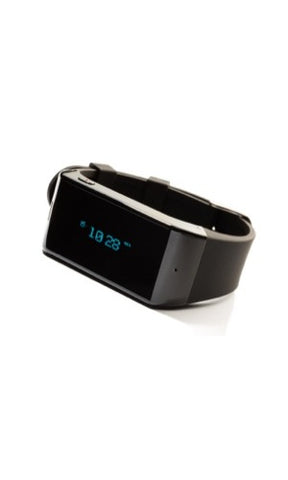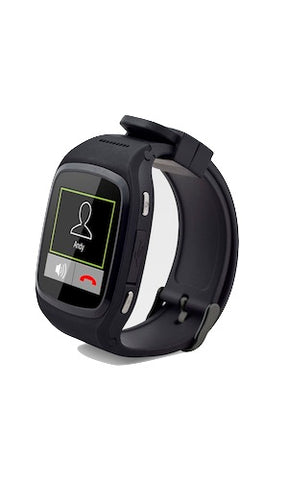How Companies Can Use Fitness Data to Drive Insurance Discounts
Written By
Wearables.com
The following is a guest post by Patrick Hitchins, Co-Founder of FitChimp and FitRankings.com.
Leading companies are beginning to use employee fitness data via wearable devices to empower + reward employees for being more active. It’s a win-win for employees and employers: Employers need a way to reduce increasing health insurance costs, and employees want opportunities to avoid dying at their desks.
When was the last time you got a high-five or fist-pound from your employer for a job well done? How about some love from the boss for hitting a 5k PR, walking 10,000 steps, or taking a quick mental break to do some pushups or lunges at your cubicle?
Perhaps this idea seems far fetched, but it could be coming to an office near you. Studies continue to show that “fit” employees are more effective at their jobs and have lower healthcare costs. One company made headlines this Summer by saving $300,000 on health insurance by submitting their Fitbit data*. Furthermore, leading companies like Google are engaged in a benefits “arms race” and are using fitness and health opportunities as a new secret weapon to attract and retain employee talent.
Leading employers are not the only ones looking to institute fitness and wellness programs. A recent RAND report confirms that 77% of companies have some type of wellness programming. With employers paying an average of $11,176 per employee on healthcare, most companies are looking for a way to reduce their costs and are turning to corporate wellness providers to help guide them.The question is whether those wellness programs are actually working.
While Corporate wellness has been around for decades, participation among employees is historically low (5%-21%), the ROI is hard to prove, and a simple Google image search would leave one highly skeptical of it’s efficacy. One of the problems is tracking the data and outcomes.
With wearable technology becoming more mainstream, the opportunity to quantify, reward, and motivate employees to live a fit and healthy lifestyle is substantial. Previously employers might have created a fitness challenge where employees would manually enter data (steps,mileage) into an “excel spreadsheet from hell”. Besides being tedious for employee and employer (usually HR), the honesty of people was often called into question-especially if there was over $100 in gifts or cash on the line.
Even with wearable technology within reach for most companies, organizing and collecting the data can be tricky for employers and employees. Many companies who have invested in fitbits, find themselves still having to create an excel spreadsheet.
There is a light at the end of the tunnel. If the data can be organized and taken from multiple sources and devices (fitbit,mapmyfitness, etc.) companies could very well negotiate lower health insurance costs, generate greater productivity among employees, and have insurance providers subsidize the cost of wellness programming.
With data quantified programs through wearables there is a win-win-win for employer, employee, and even insurance companies (as if they needed to make any more money):
- Employee: Employer-sponsored fitness programming and more rewards + recognition for being healthy.
- Employer: Insurer-subsidized wellness programs, lower insurance costs, and greater employee productivity.
- Insurance: Less claims and higher profit margins.
*Upon speaking with the HR Manager of Appirio we found out that they received a subsidy for greater wellness programming by showing the fitbit data. This later translated into a discount and more subsidies, but was not as simple as an A+B=C discount. It required significant negotiating, but fitness data was a powerful tool for Appirio in the negotiation.
About the Author: Patrick Hitchins is the Co-Founder of FitChimp and FitRankings.com, based in Austin TX. He has a Master’s Degree in Sport Psychology and a background in sport+fitness tech startups. Reach him at pat@getfitchimp.com, @hitchpat.
The post How Companies Can Use Fitness Data to Drive Insurance Discounts appeared first on Wearables.com.
Tags: Activity Trackers, Android Smartwatch, Bluetooth Watches, Calorie Tracker, Featured Items, Fitness Band, Fitness Watches, Fitness Wearables, GPS Tracker, Health Wearables, Heart Rate Monitor Watch, iOS Smartwatches, Medical, Pedometer Watches, Running Watches, Smartwatches, Sport Watches, Step Tracker, Swimming Wearables, Tennis Wearables, Workout Watches






